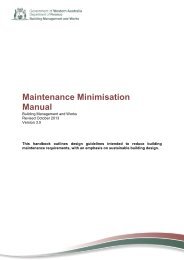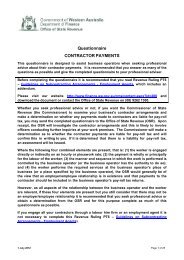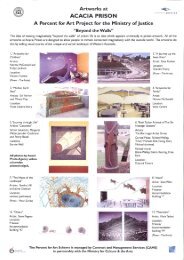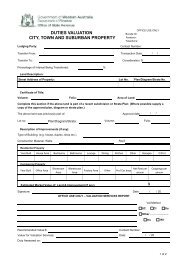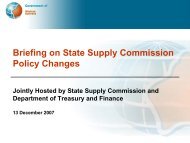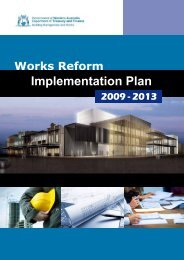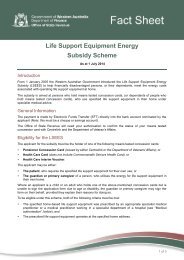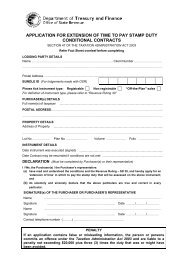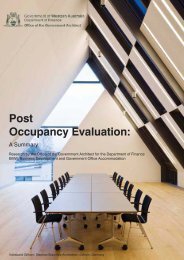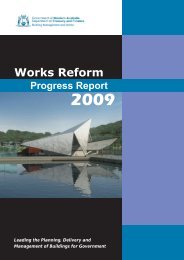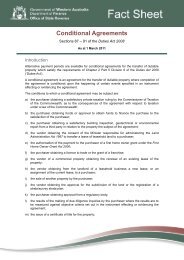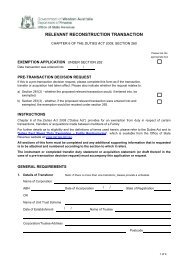Renewable Energy Handbook 2010 - Department of Finance - The ...
Renewable Energy Handbook 2010 - Department of Finance - The ...
Renewable Energy Handbook 2010 - Department of Finance - The ...
Create successful ePaper yourself
Turn your PDF publications into a flip-book with our unique Google optimized e-Paper software.
2.3 Western Australia’sElectricity Network Infrastructure2.3.1 INTRODUCTION<strong>The</strong>re are three major electricity networks inWestern Australia. <strong>The</strong>se are:<strong>The</strong> South West Interconnected System (SWIS);·<strong>The</strong> North West Interconnected System (NWIS); and··<strong>The</strong> Esperance System.<strong>The</strong>se three major networks are shown on the<strong>Energy</strong> Resources and Infrastructure map below.OFFICE OF ENERGYRENEWABLE ENERGY HANDBOOK <strong>2010</strong>While there are some privately owned electricitytransmission and distribution networks within the State,primarily in the Pilbara, Western Power (SWIS) andHorizon Power (non-SWIS) own the principal electricitynetworks that supply to the public. Horizon Poweralso owns and operates 29 isolated power systems.South West Interconnected System (SWIS).·This extends from Kalbarri in the North, to Albanyin the South, and Kalgoorlie to the East. It containsmore than 140 major substations, 6000km <strong>of</strong>transmission lines (66 kV and above) and over64,000km <strong>of</strong> distribution lines (33 kV and below).North West Interconnected System (NWIS).·Is jointly owned and operated by Horizon Power asthe Regional electricity utility owned by the Government<strong>of</strong> Western Australia, Pilbara Iron, Alinta and BHPBilliton. It contains over 400km <strong>of</strong> high voltage lines,serving the communities <strong>of</strong> Dampier to Tom Pricethrough the Pilbara Iron Network and areas fromPort Hedland, Karratha, to Point Samson throughthe Horizon Power Network. Further informationcan be found at: www.nwis.com.au·Regional Networks. <strong>The</strong>re are 29 separateRegional Networks, which are generally based onregional towns including Esperance, Kununurra,Kalgoorlie and Carnarvon.<strong>The</strong> SWIS has a load varying between about 1500and 4000W, which is small in comparison to someother networks. Unlike the National Electricity Market,the SWIS lacks interconnection with other networksand is unable to balance fl uctuations in networksupply and demand by supplying or receiving surpluspower from other systems. As a consequence,the SWIS is potentially more sensitive to fl uctuationsin load and generation.19RENEWABLE ENERGY AND THE ELECTRICITY MARKET IN WESTERN AUSTRALIAFigure 4. Western Australia <strong>Energy</strong> Resourcesand Infrastructure Map <strong>2010</strong>Copies <strong>of</strong> the map are available at:www.energy.wa.gov.au



